Growing herbs can be a fun and rewarding gardening experience. Not only do you put your gardening skills to the test, but it also gets you to work on your culinary abilities! As such, choosing which herb is easy to plant and take care of is essential.
Easiest herbs to grow are basil, bay laurel, chives, cilantro, dill, fennel, lavender, lemongrass, mint, oregano, parsley, rosemary, sage, tarragon, and thyme.
To know more about these easy-to-grow herbs, their growing conditions, soil and water requirements, and other interesting information, simply read further this article!
15 Easiest Herbs to Grow
Basil
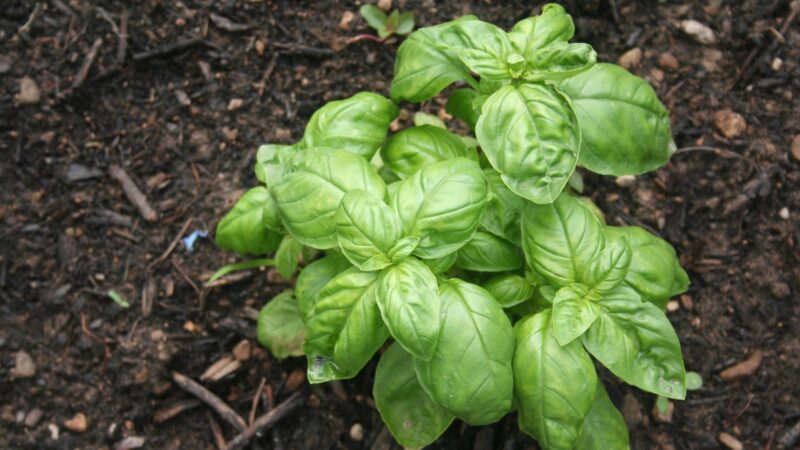
A warm-season, sun-loving herb, Basil is one of the most popular garden herbs today. It is a relative of the mint plant and is used in sauces, salads, and garnish as well as a flavoring in oils, teas, and vinegar. Essential oil can also be extracted from its leaves to add to perfumes, dental products, and other cosmetics.
- Scientific name: Ocimum basilicum
- Appearance: Grows from a thick taproot and has oval, silky green leaves that emerge from a central stem and produces white flowers on a single spike.
- Color varieties: Variegated with white edges, dark purple, green
- Size: Up to 51 inches
- Growing conditions: Can be planted from seed or propagated from cuttings. Grows best in daytime temperatures above 70°F and nighttime temperatures above 50°F. It requires 6 to 8 hours of full sun daily but can benefit from afternoon shade.
- Soil & water requirements:
- Prefers fertile, moist soil with a pH level between 6 and 7. When planting indoors, it should be sown in a sterile seed starting mix.
- Water the plant at its base. Then, apply a layer of mulch around it. Avoid overhead irrigation or splashing the foliage with water, as it can cause leaf spots.
Bay Laurel
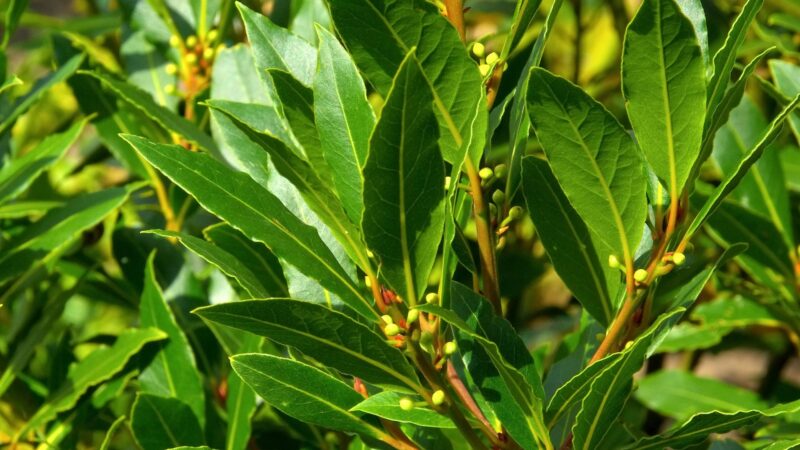
A widely-cultivated herb also referred to as the Sweet Bay and True Laurel, the Bay Laurel is grown primarily as a culinary herb but can also be used as an outdoor container plant or a long-lived houseplant due to its ornamental value. This herb is commonly used in soups, stews, casseroles, and roasts with long cooking times, as well as in teas and marinades.
- Scientific name: Laurus nobilis
- Appearance: A medium-sized evergreen shrub with thick, glossy green, lanceolate leaves with finely serrated edges, and can be grown as single-trunked or multi-trunked. Its bark ranges from olive green to gray in color. It produces pale yellow-green, star-shaped flowers and tiny, purplish-black, egg-shaped berries.
- Color varieties: N/A
- Size: Up to 24 inches
- Growing conditions: Can be grown from seed or propagated through cuttings and by air-layering. Prefers warm locations with as much sun as possible and tolerates temperatures of 35˚F to 60˚F.
- Soil & water requirements:
- Does best in well-drained soil. In its natural habitat, it grows on damp rocky ravines, old walls, and thickets.
- Needs enough water to keep the soil barely moist. However, it needs regular watering when planted indoors.
Chives
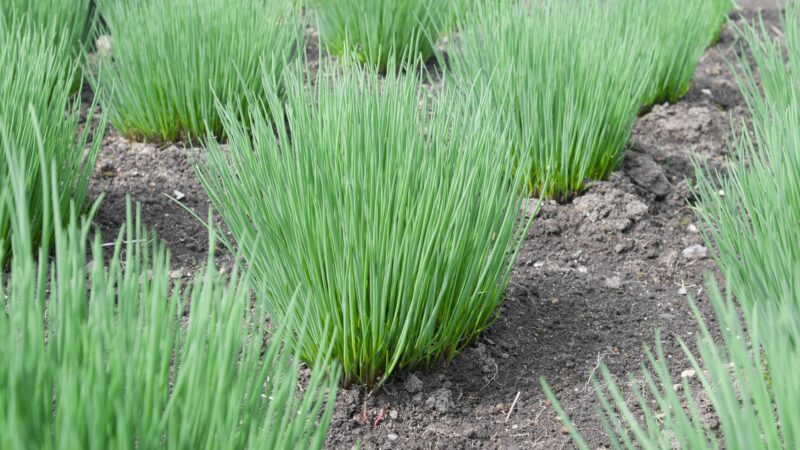
Native to Europe and Asia, Chives is a culinary herb that belongs to the lily family and is characterized by a mild onion flavor. It is a herbaceous perennial that blooms in the middle of the spring to early summer and has several cultivars. Chives are usually grown in vegetable gardens but can be incorporated into ornamental landscapes.
- Scientific name: Allium schoenoprasum
- Appearance: Has tapered, hollow, and cylindrical bright green leaves that are soft-textured. It produces large flowers in dense clusters, forms small bulbs on its roots, and overall grows in clumps.
- Color varieties: Purple, white, grayish-lavender, pink
- Size: Up to 18 inches
- Growing conditions: Can be started from seeds or propagated by division. Spring is the best time to plant this herb. It should be placed at a location where it can receive 6 to 8 hours of sunlight daily and temperatures between 60°F to 70°F.
- Soil & water requirements:
- Plant in organically rich, well-drained soil. Replant new clumps in soil that is rich with organic matter.
- Provide consistent moisture but make sure it is not overwatered.
Cilantro
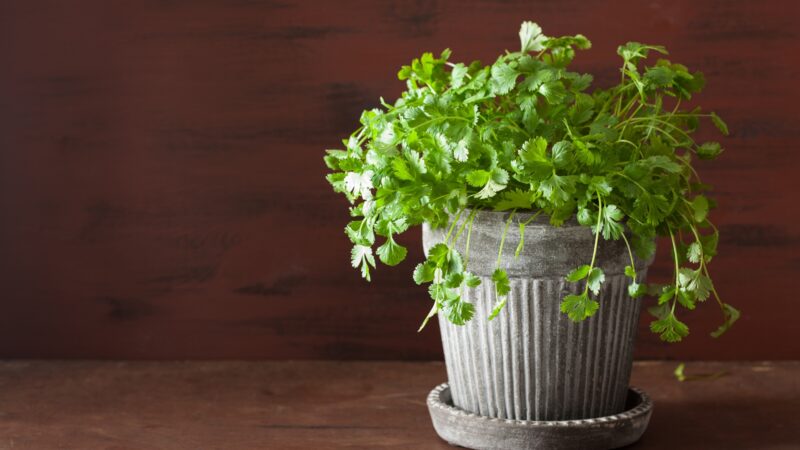
Cilantro is a cool-season, annual herb that belongs to the parsley family. Its leaves have a sweet but musky odor and a flavor, not most people would like, as it is either citrusy or soapy. Its seeds are used as a spice, which is described as aromatic and spicy, and are referred to as Coriander. Aside from its culinary value, cilantro is also used in herbal medicine.
- Scientific name: Coriandrum sativum
- Appearance: Has wide flat leaves but becomes lacy and fern-like once the plant goes through bolting. It has long flower stems with clusters of tiny flowers produced on the umbels.
- Color varieties: White, pale pink
- Size: Up to 20 inches
- Growing conditions: Can be grown from seed or through stem cuttings. It has a growing season of about 100 days. It must be placed under the full sun but can tolerate light shade and temperatures between 50°F to 85°F.
- Soil & water requirements:
- Well-drained, moderately fertile soil that is also rich in organic matter.
- Cilantro thrives on frequent, short irrigations since it has a shallow root system. Overwatering can lead to the development of leaf diseases, so it’s best to avoid that.
Related: How to Grow Cilantro? | Step by Step Guide
Dill
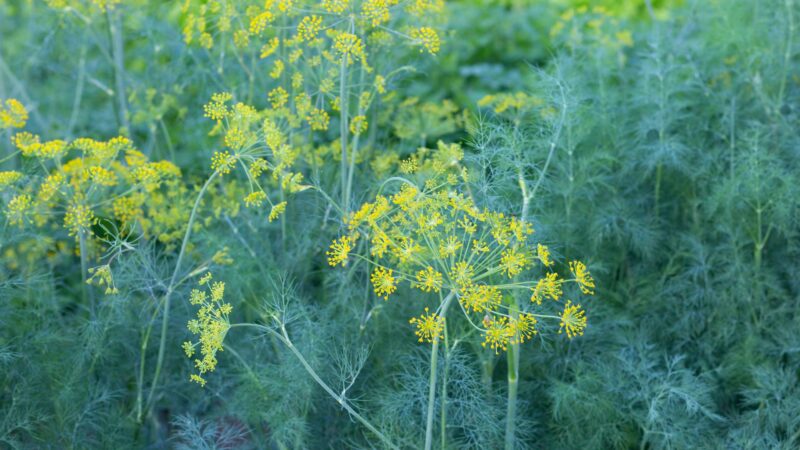
Dill belongs to the parsley family and is characterized by aromatic leaves and seeds that are used for culinary purposes, as well as oil that can be extracted from the above-ground parts of the plant. The leaves should be stored in a plastic bag inside the refrigerator since they wilt quickly.
- Scientific name: Anethum graveolens
- Appearance: Has soft, bluish-green leaves that give off a fern-like appearance due to its alternate, finely divided form. It has one long flower stalk with tiny yellow flowers produced on small open umbels, as well as light brown seed-like fruits.
- Color varieties: N/A
- Size: 18 inches to 4 feet
- Growing conditions: Can be sown directly or planted in a container and then placed in a location where it can receive at least 6 hours of sunlight every day. It can tolerate temperatures as low as 25°F.
- Soil & water requirements:
- Organically rich, well-drained soil that is low in fertility is what this plant prefers. Usually, well-composted organic matter is added to the soil.
- Requires only 1 to 2 waterings a week, but the plant can generally tolerate drier soil conditions.
Fennel
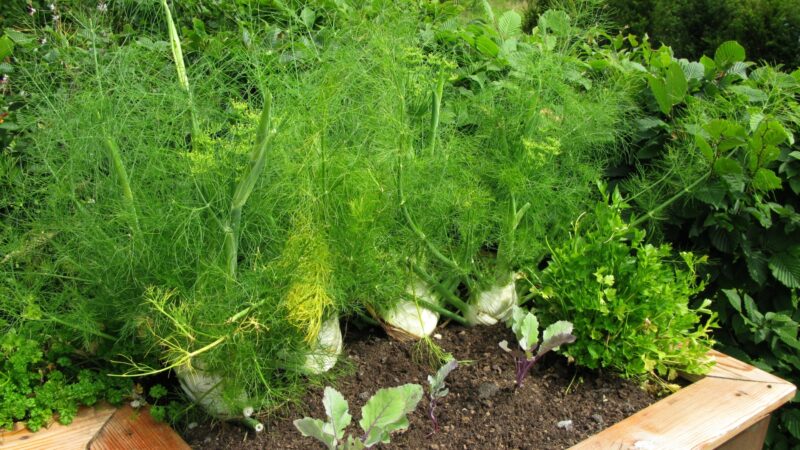
Fennel is a herbaceous, short-lived perennial plant but is usually grown as an annual. It is also referred to as the sweet fennel or wild fennel, depending on the variety. Its leaves and seeds are used as a spice in cooking while its bulb is also edible. It is usually harvested around 5 to 7 months after planting.
- Scientific name: Foeniculum vulgare
- Appearance: Erect herb with hollow stems, feathery dark green foliage, and tiny yellow flowers produced on flat umbels. The plant has a large, white taproot.
- Color varieties: N/A
- Size: Up to 6 feet
- Growing conditions: Usually propagated by direct sowing of seeds but they can also be transplanted. It requires full sun, temperatures between 59°F to 68°F, and is best planted in early spring or fall.
- Soil & water requirements:
- Does best in well-draining, organically-rich, loam soil with a pH level between 6.3 to 8.3. The more fertile the soil is, the less flavor the plant will have.
- Water regularly and do not allow the soil to dry between waterings since the plant is not tolerant to drought. Apply 1 to 2 inches of water weekly throughout the growing season.
Lavender
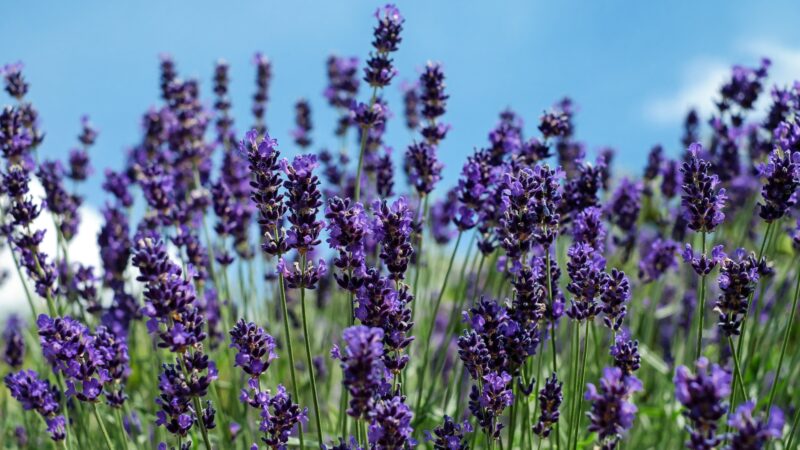
Lavender is a perennial shrub belonging to the mint family and is native to Mediterranean areas. It is known for its aromatic leaves and flowers that bloom in the summer. Lavender is used as a culinary herb or to produce lavender sugar as a flavoring in sauces and desserts. It can also be extracted for its essential oil or used as an ornamental plant.
- Scientific name: Lavandula angustifolia
- Appearance: Small spreading and branching shrubs with grayish-green leaves, long flowering shoots, dry seed heads, and flowers that are produced on spikes or shoots
- Color varieties: Purple, pale pink, rose, white, yellow
- Size: 20 to 24 inches
- Growing conditions: Can be propagated through seeds, stem cuttings, or division. Optimal temperatures for its survival are between 45°F to 70°F.
- Soil & water requirements:
- Prefers dry, sandy, well-draining soils with pH levels of 5.8 to 8.3 and applied with an inch of coarse compost and organic matter to increase air ventilation and ensure plant establishment.
- Apply 1 gallon of water a week until the plants are established. Fully established plants need only half a gallon of water every 2 weeks until flower buds start to form.
Related: Lavender in Pots | How to Grow and Care For It?
Lemongrass
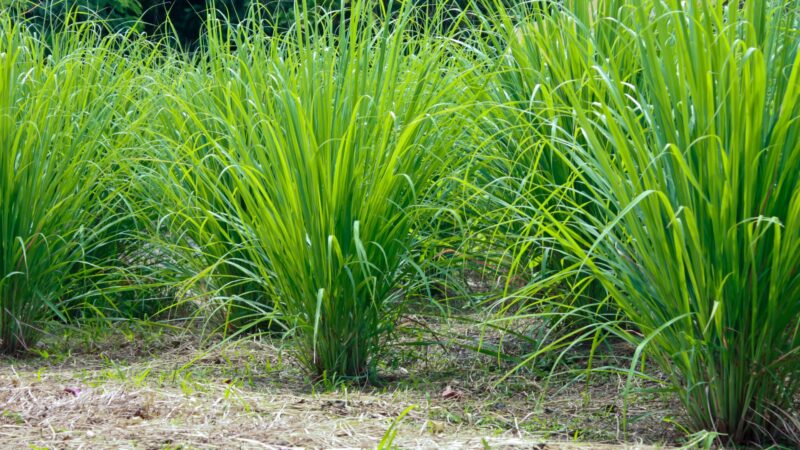
Known for its strong lemon fragrance, Lemongrass is a tropical plant commonly used as a flavoring in Southeast Asian cuisine. Essential oil can be extracted from leaves to use in perfumes, insect repellents, and soaps. This plant is not considered an ornamental herb and is usually grown as an annual.
- Scientific name: Cymbopogon citratus
- Appearance: Grows in dense clumps, has coarse, strap-like, bluish-green leaves that are finely serrated on its edges and have drooping tips, and produces a cluster of large, stalked flowers.
- Color varieties: N/A
- Size: 3 to 5 feet
- Growing conditions: Propagated by division and prefers warm, sunny, and humid growing conditions with temperatures ranging from 77°F to 86°F but can tolerate as low as 50°F and as high as 91.4°F
- Soil & water requirements:
- Can grow in a wide variety of soils but will perform best in well-draining, fertile, loam soil with a pH level between 5.0 and 8.4. It can also be successfully planted in a rooting medium for container plantings.
- Requires regular watering, especially if grown in drier climates. Misting regularly also helps.
Mint
Mint is the perfect herb for beginning gardeners as it is easy to grow, is generally hardy as can tolerate a variety of temperatures, and attracts pollinators. Its leaves are used to make jams, teas, and desserts, while its essential oil is used as flavoring. When left unattended, mint plants can be quite invasive since they are rapid growers.
- Scientific name: Mentha spp.
- Appearance: Has erect, branching stems, leaves that are oblong or lanceolate in shape covered in tiny hairs, and flowers produced on a terminal flower spike.
- Color varieties: Pink, dark purple, white
- Size: 1 to 2 feet
- Growing conditions: Best grown in locations where they can receive partial shade to full sun. It can tolerate temperatures as low as -20°F. It is readily propagated through cuttings, by division, or from seeds.
- Soil & water requirements:
- Rich, moist, slightly acidic soil, preferably amended with compost.
- During the growing season, water 1 to 2 inches regularly every week. Avoid overwatering as it can cause diseases.
Oregano
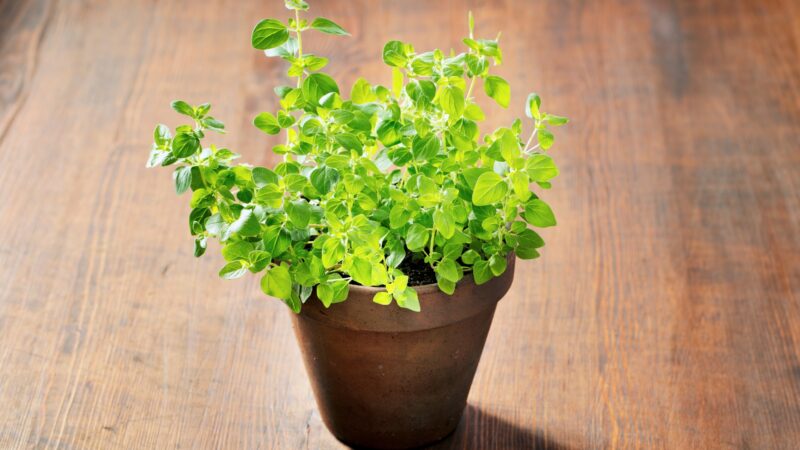
Also called wild marjoram, Oregano is a hardy perennial used extensively as a flavoring on pizza, lamb or steak, and other Italian-type sauces. It is also used to extract essential oil used as an ingredient in wines and other liqueurs, as well as in soaps. It typically requires little care and can grow very vigorously.
- Scientific name: Origanum vulgare
- Appearance: Herbaceous or woody herb that has multiple branching stems, round or oval alternately-arranged grayish-green leaves, and brown fruits
- Color varieties: Purple, pink, white
- Size: 6 inches to 2 feet
- Growing conditions: Grown from seed, cuttings, or division, and should be placed in a location where it can receive full sun and temperatures of 50°F to 80°F
- Soil & water requirements:
- Can tolerate poor soil conditions but performs best in light, well-draining soil with a pH level between 4.5 to 8.7. Adding mulch can help increase its survival during the winter season.
- Water regularly, but once the plant has established, reduce the amount of water given to it. Provide supplemental irrigation during dry spells.
Parsley
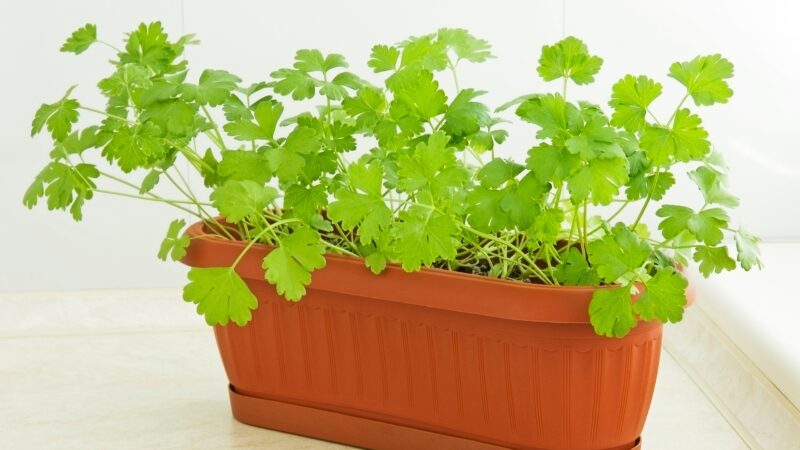
Parsley has two distinct types: flat-leaf, which produces rosettes of flat leaves usually used in cooking, and moss-curled, which produces rosettes of tightly curled and finely cut leaves commonly utilized in making garnish. Both types are biennials but are treated and grown like annuals. The plant can overwinter but may produce tough and bitter leaves.
- Scientific name: Petroselinum crispum
- Appearance: Bright green herb that grows erect and has branched, hollow stems, dark green curled or flat leaves, and small, yellow flowers. Younger plants form rosette leaves.
- Color varieties: N/A
- Size: 12 to 39 inches
- Growing conditions: Usually grown from seeds (direct seeding or sowing indoors) that are soaked in water overnight before planting. It grows best if provided with high light but placed in a cool growing location.
- Soil & water requirements:
- Prefers well-drained, organic matter-rich soils with a pH range between 6.0 to 7.0. Weeds should be removed through cultivation and adding a layer of mulch.
- Water thoroughly at least once a week. Once it reaches maturity, water at least 1 to 2 inches deep weekly.
Rosemary
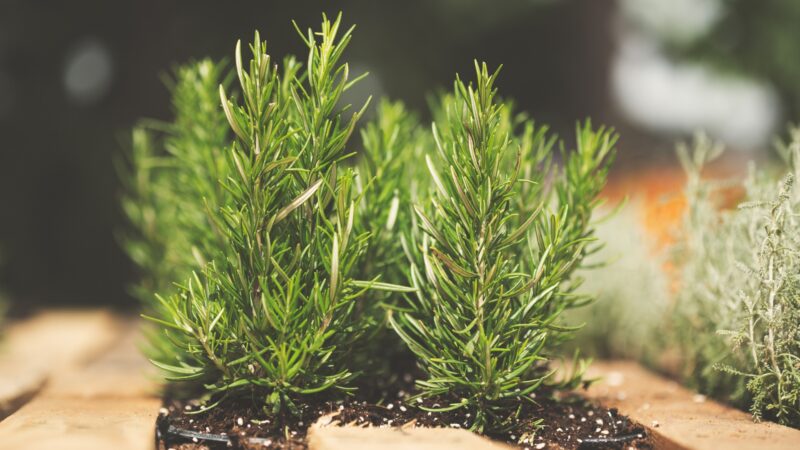
A relatively easy-to-grow herb that has a pungent flavor and pine-like scent, making it a popular culinary ingredient, Rosemary plants can be harvested many times in a single season. Some varieties produce small flowers that are harvested and incorporated into salads. Hanging rosemaries in bundles will allow them to last for longer periods.
- Scientific name: Rosmarinus officinalis
- Appearance: Evergreen shrub with an overall grayish-green appearance. It has leathery, needle-like leaves with a dark green upper surface and hairy, white undersides, as well as two-lipped flowers that are whorled around square stems.
- Color varieties: White, pale blue, pink
- Size: 4 to 6 feet
- Growing conditions: Propagation is done using cuttings placed in a location where the plant can receive at least 6 hours of full sun every day and temperatures of 60°F to 70°F.
- Soil & water requirements:
- Prefers slightly acidic, well-drained, sufficiently moist soils with good air circulation. It does not tolerate clay soils. Organic matter or compost should be added to the surface of the soil and incorporated to a depth of 6 to 8 inches.
- The plant should be watered every 1 to 2 weeks, allowing the soil to dry out thoroughly between waterings.
Sage
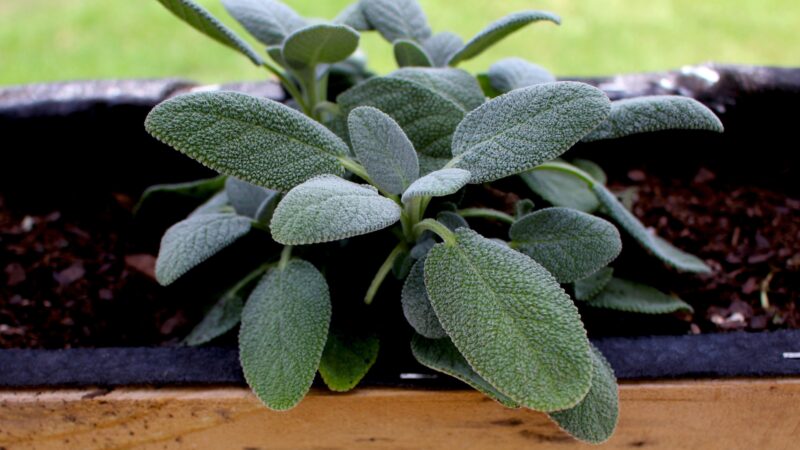
Sage is an aromatic perennial belonging to the mint family and native to the northern Mediterranean region. It is easy to propagate and takes approximately 75 days from planting for it to be ready for its first harvest. Sage plants usually do well if they are pruned during the early spring to promote growth.
- Scientific name: Salvia officinalis
- Appearance: Woody shrub with slightly fuzzy, opposite leaves. It produces pinkish-lavender to bluish-lavender flowers borne on upright, purple-blue flower spikes in the early summer.
- Color varieties: Sage green, gray, golden, purple
- Size: 16 to 28 inches
- Growing conditions: Easy to start from seed but can be propagated by division, layering, or using stem cuttings. It requires warm temperatures and sufficient sunlight to produce high content of essential oil.
- Soil & water requirements:
- It can tolerate poor soil conditions but prefers dry, well-drained soil. Fertilizers should be added to the soil before planting to encourage root development.
- Water consistently, especially during periods of drought or if the soil the plant is growing in is poor quality.
Tarragon
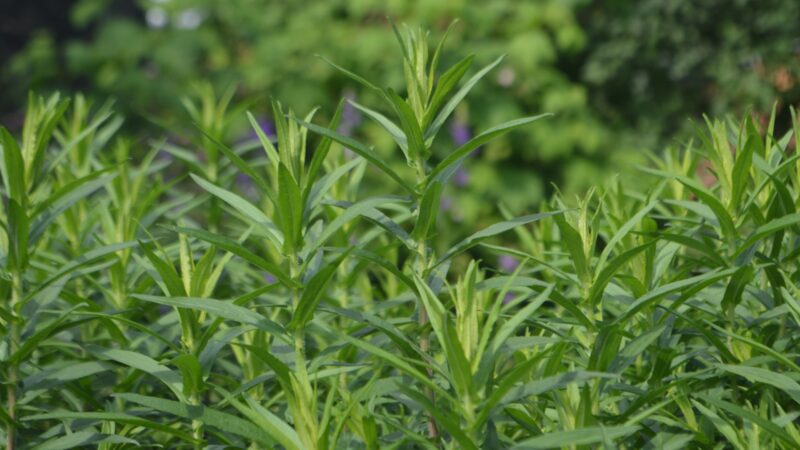
Also known as the Dragon Sagewort and Estragon, Tarragon is a culinary herb that also provides essential oils that can be extracted from its flowers and leaves. It is a herbaceous perennial that often lives for several years as it dies back during winter seasons and regrows every spring.
- Scientific name: Artemisia dracunculus
- Appearance: Erect-growing herb with branching stems and needle-like, glossy green leaves. It occasionally produces small, non-ornamental, green flowers in the summer season.
- Color varieties: N/A
- Size: Up to 5 feet
- Growing conditions: Propagated using rhizome or stem cuttings and performs best when grown in a dry location where they can receive full sun and temperatures between 60°F to 70°F
- Soil & water requirements:
- Grows best in dry, warm, light-textured, well-aerated, well-draining, and slightly acidic soils with pH levels between 6.5 to 7.5. Mulching is done usually by placing a straw in the soil.
- Allow soil to dry between waterings. New plants should be watered regularly until they become established while mature plants should be watered once a week.
Thyme
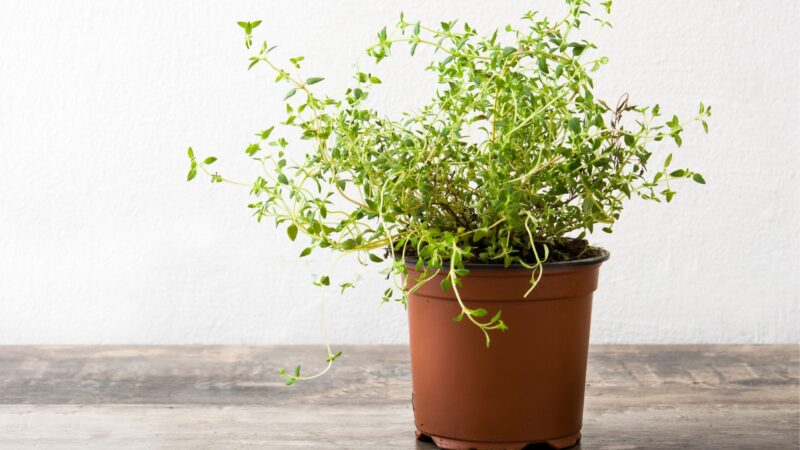
It is an aromatic culinary and medicinal herb that makes a good addition to pollinator gardens, borders, and rock gardens, as well as a container planting. Thyme is also used to produce flavoring for toothpaste and as perfumes with its essential oil. This plant is tolerant to frost and drought conditions, making them easy to grow and maintain.
- Scientific name: Thymus vulgaris
- Appearance: Small evergreen shrub with an ascending or erect growth habit with many branching, woody stems. It has elliptical or linear leaves that are densely covered with hairs and reddish-brown oil glands. It also produces tiny brown fruits.
- Color varieties: White, red, pink, lilac, or pale purple
- Size: Up to 20 inches
- Growing conditions: Thyme grows best in warm and sunny locations, preferably at temperatures between 40°F to 82°F. It can be propagated from seed, air layering, cuttings, and root division.
- Soil & water requirements:
- Prefers well-draining, fertile, and alkaline loam or sandy soil. Mulching using limestone gravel can suppress the growth of weeds and improve drainage.
- Water regularly at the time of planting and keep the plant sufficiently moist but not wet until it becomes mature. Soil should be dried out between waterings.
List of Sources
Mint in the Garden – https://extension.usu.edu/yardandgarden/research/mint-in-the-garden
Thymus vulgaris – https://plants.ces.ncsu.edu/plants/thymus-vulgaris/